Cell death and autophagy under oxidative stress: roles of poly(ADP-Ribose) polymerases and Ca(2+)
- PMID: 22751932
- PMCID: PMC3422003
- DOI: 10.1128/MCB.00437-12
Cell death and autophagy under oxidative stress: roles of poly(ADP-Ribose) polymerases and Ca(2+)
Abstract
On the cellular level, oxidative stress may cause various responses, including autophagy and cell death. All of these outcomes involve disturbed Ca(2+) signaling. Here we show that the nuclear enzymes poly(ADP-ribose) polymerase 1 (PARP1) and PARP2 control cytosolic Ca(2+) shifts from extracellular and intracellular sources associated with autophagy or cell death. The different Ca(2+) signals arise from the transient receptor potential melastatin 2 (TRPM2) channels located in the cellular and lysosomal membranes. They induce specific stress kinase responses of canonical autophagy and cell death pathways. Autophagy is under the control of PARP1, which operates as an autophagy suppressor after oxidative stress. Cell death is activated downstream of extracellular signal-regulated kinase 1/2 (ERK1/2) and AKT, whereas cell survival correlates with the phosphorylation of p38, stress-activated protein kinase/Jun amino-terminal kinase (SAPK/JNK), and cyclic AMP response element-binding protein (CREB) with its activating transcription factor (ATF-1). Our results highlight an important role for PARP1 and PARP2 in the epigenetic control of cell death and autophagy pathways.
Figures
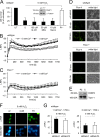
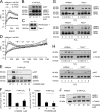
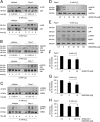
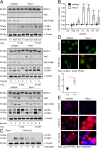

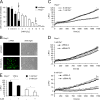

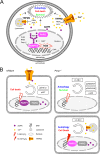
Similar articles
-
Sensitization of H2O2-induced TRPM2 activation and subsequent interleukin-8 (CXCL8) production by intracellular Fe(2+) in human monocytic U937 cells.Int J Biochem Cell Biol. 2015 Nov;68:119-27. doi: 10.1016/j.biocel.2015.09.005. Epub 2015 Sep 16. Int J Biochem Cell Biol. 2015. PMID: 26386353
-
TRPM2 channel opening in response to oxidative stress is dependent on activation of poly(ADP-ribose) polymerase.Br J Pharmacol. 2004 Sep;143(1):186-92. doi: 10.1038/sj.bjp.0705914. Epub 2004 Aug 9. Br J Pharmacol. 2004. PMID: 15302683 Free PMC article.
-
The Poly(ADP-ribose) polymerase PARP-1 is required for oxidative stress-induced TRPM2 activation in lymphocytes.J Biol Chem. 2008 Sep 5;283(36):24571-83. doi: 10.1074/jbc.M802673200. Epub 2008 Jul 3. J Biol Chem. 2008. PMID: 18599483 Free PMC article.
-
TRPM2: a calcium influx pathway regulated by oxidative stress and the novel second messenger ADP-ribose.Pflugers Arch. 2005 Oct;451(1):212-9. doi: 10.1007/s00424-005-1446-y. Epub 2005 Jun 11. Pflugers Arch. 2005. PMID: 15952035 Review.
-
Mechanistic insight into the role of Poly(ADP-ribosyl)ation in DNA topology modulation and response to DNA damage.Mutagenesis. 2020 Feb 13;35(1):107-118. doi: 10.1093/mutage/gez045. Mutagenesis. 2020. PMID: 31782485 Review.
Cited by
-
Silica nanoparticles induce lung inflammation in mice via ROS/PARP/TRPM2 signaling-mediated lysosome impairment and autophagy dysfunction.Part Fibre Toxicol. 2020 Jun 8;17(1):23. doi: 10.1186/s12989-020-00353-3. Part Fibre Toxicol. 2020. PMID: 32513195 Free PMC article.
-
"TRP inflammation" relationship in cardiovascular system.Semin Immunopathol. 2016 May;38(3):339-56. doi: 10.1007/s00281-015-0536-y. Epub 2015 Oct 19. Semin Immunopathol. 2016. PMID: 26482920 Free PMC article. Review.
-
Calcium alterations signal either to senescence or to autophagy induction in stem cells upon oxidative stress.Aging (Albany NY). 2016 Dec 8;8(12):3400-3418. doi: 10.18632/aging.101130. Aging (Albany NY). 2016. PMID: 27941214 Free PMC article.
-
FAF1 mediates regulated necrosis through PARP1 activation upon oxidative stress leading to dopaminergic neurodegeneration.Cell Death Differ. 2016 Nov 1;23(11):1873-1885. doi: 10.1038/cdd.2016.99. Epub 2016 Sep 23. Cell Death Differ. 2016. PMID: 27662363 Free PMC article.
-
PARP1 Impedes SIRT1-Mediated Autophagy during Degeneration of the Retinal Pigment Epithelium under Oxidative Stress.Mol Cells. 2020 Jul 31;43(7):632-644. doi: 10.14348/molcells.2020.0078. Mol Cells. 2020. PMID: 32732457 Free PMC article.
References
-
- Blanc A, Pandey NR, Srivastava AK. 2003. Synchronous activation of ERK 1/2, p38mapk and PKB/Akt signaling by H2O2 in vascular smooth muscle cells: potential involvement in vascular disease (review). Int. J. Mol. Med. 11: 229–234 - PubMed
-
- Cheng WT, et al. 2009. Oxidative stress promotes autophagic cell death in human neuroblastoma cells with ectopic transfer of mitochondrial PPP2R2B (Bbeta2). BMC Cell Biol. 10: 91 doi:10.1186/1471-2121-10-91 - DOI - PMC - PubMed
Publication types
MeSH terms
Substances
LinkOut - more resources
Full Text Sources
Molecular Biology Databases
Research Materials
Miscellaneous
